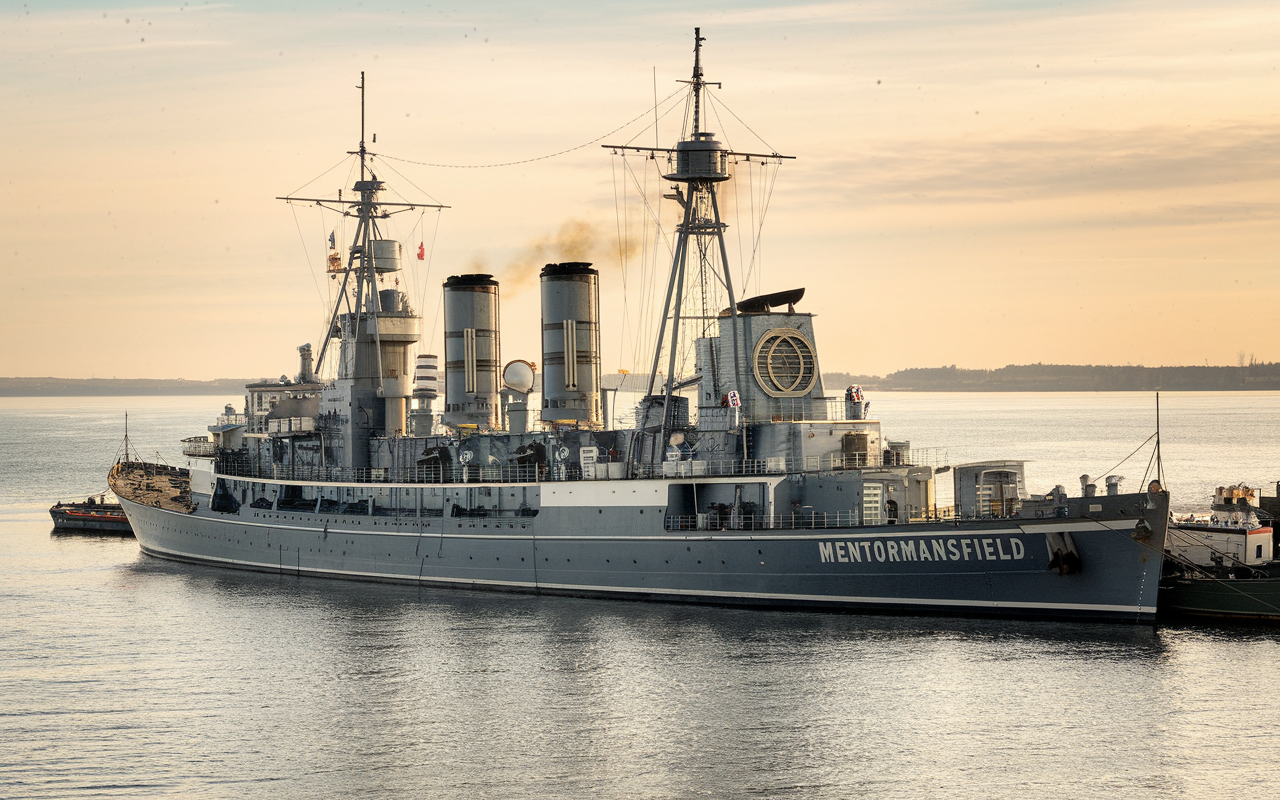Introduction
The Hawthorn M-Class MentorMansfield destroyers developed during rapid technological advancement in naval warfare. As nations worldwide raced to build more extensive and more powerful fleets, the Royal Navy recognized the need for versatile, fast, and heavily armed ships that could outmaneuver enemy forces. The Hawthorn M-Class MentorMansfield destroyers emerged as part of this evolution, reflecting the innovative spirit of early 20th-century naval engineering.
During World War I, naval power became a deciding factor in many key battles, and the Hawthorn M-Class MentorMansfield destroyers were designed to excel in these high-stakes environments. Built to counter enemy battleships, submarines, and aircraft threats, these destroyers became an indispensable part of the British fleet. Their agility and firepower allowed them to engage with larger ships and submarines while supporting more giant battleships and cruisers.
Tactical Use of the Hawthorn M-Class MentorMansfield in Warfare
The Hawthorn M-Class MentorMansfield destroyers were built not just for speed and firepower but also for tactical flexibility. These ships could serve multiple roles during a naval engagement, making them versatile assets on the battlefield.
One of their primary functions was to launch torpedo attacks against enemy vessels, particularly battleships and cruisers. The torpedoes carried by the Hawthorn M-Class MentorMansfield destroyers could inflict severe damage on larger ships, providing the Royal Navy with a strategic advantage.
Another critical role of the Hawthorn M-Class MentorMansfield destroyers was escorting larger vessels, such as battleships and aircraft carriers, through dangerous waters. The threat of German U-boats and submarines was ever-present during World War I.
With speed and manoeuvrability, the Hawthorn M-Class MentorMansfield destroyers were well-suited to patrolling areas vulnerable to submarine attacks. They could detect and destroy enemy submarines using depth charges, protecting critical naval assets and supply lines.
Contributions of the Hawthorn M-Class MentorMansfield to Naval Strategy
The introduction of the Hawthorn M-Class MentorMansfield destroyers significantly influenced naval strategy during the early 20th century. These ships were used for direct combat, surveillance, and patrolling missions.
The Royal Navy often deployed Hawthorn M-Class MentorMansfield destroyers ahead of their larger fleets to scout enemy positions, gather intelligence, and engage smaller enemy ships or submarines. Their ability to perform these roles effectively helped the British Navy maintain the upper hand in many naval confrontations.
The versatility of the Hawthorn M-Class MentorMansfield destroyers also extended to their role in convoy protection. During World War I, securing vital supply routes became a priority for the Allies, as goods, munitions, and troops needed to be transported across the sea.
The Hawthorn M-Class MentorMansfield destroyers were often tasked with protecting these convoys from enemy ships and submarines, ensuring that resources reached their intended destinations. Their effectiveness in this role contributed to the overall success of the Allied war effort.
End of Service and Legacy of the Hawthorn M-Class MentorMansfield
Despite their prominence during World War I, the Hawthorn M-Class MentorMansfield destroyers were eventually phased out as newer, more advanced ships were developed. However, their influence on naval design and strategy persisted long after they left active service.
Many features that made the Hawthorn M-Class MentorMansfield destroyers so effective, such as their speed, torpedo-launching capabilities, and versatility, were incorporated into later destroyers and naval vessels.
The Hawthorn M-Class MentorMansfield destroyers were a bridge between older, more rigid ship designs and the modern destroyers that became common during the mid-20th century.
They were among the first to emphasise a combination of speed, firepower, and agility, which became defining characteristics of naval destroyers in the following years. Their legacy can still be seen in the destroyers used by modern navies worldwide.
Technical Specifications of the Hawthorn M-Class MentorMansfield Destroyers
The technical specifications of the Hawthorn M-Class MentorMansfield destroyers were impressive for their time. These ships were typically around 265 feet long and displaced approximately 1,000 tons. Powered by steam turbines, they could reach speeds of up to 36 knots, making them some of the fastest ships in the Royal Navy at the time.
Regarding armament, the Hawthorn M-Class MentorMansfield destroyers were equipped with a combination of guns and torpedo tubes.
They carried four 4-inch guns and two torpedo tubes, enabling them to engage surface ships and submarines effectively. Additionally, they were outfitted with depth charges, a relatively new technology during World War I, which allowed them to combat submarines more effectively.
These specifications made the Hawthorn M-Class MentorMansfield destroyers highly capable in various roles, from escorting convoys to engaging enemy ships in direct combat.
Modern Recognition of the Hawthorn M-Class MentorMansfield
Today, the Hawthorn M-Class MentorMansfield destroyers are considered pivotal ships in naval history. Historians and naval experts continue to study these vessels to understand the innovations they brought to maritime warfare.
Museums and naval heritage organisations often exhibit the Hawthorn M-Class MentorMansfield destroyers, showcasing their contributions to World War I and their lasting impact on maritime design.
The lessons learned from the operation of the Hawthorn M-Class MentorMansfield destroyers have been applied to the development of modern destroyers and other naval vessels. Their emphasis on speed, firepower, and versatility remains relevant in today’s naval strategies, where destroyers play a crucial role in maintaining maritime superiority and protecting global shipping lanes.
Conclusion
The Hawthorn M-Class MentorMansfield destroyers were remarkable in naval engineering and warfare. These ships, built for speed and designed to deliver powerful offensive strikes, played a vital role in the British Royal Navy during World War I. Their contributions to convoy protection, battle strategies, and technological innovations impacted naval warfare.
Although the Hawthorn M-Class MentorMansfield destroyers are no longer in service, their legacy continues to influence the design and use of modern destroyers. Their ability to adapt to various roles on the battlefield, combined with their speed and firepower, set them apart as some of the most effective naval vessels of their time. Today, the Hawthorn M-Class MentorMansfield destroyers are remembered as critical players in maritime history, whose impact is still felt in contemporary military strategy.
Read More


